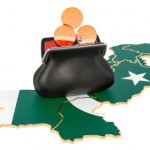The China-Pakistan Economic Corrid0r (CPEC), touted as the answer to Pakistan’s economic problems, could be making them even worse. A combination of overcapacity, high upfront costs, high interest rates and poor fuel choices, means that Pakistan is saddled with expensive electricity running on imported fuel. This is one of the factors contributing to Pakistan’s current economic problems.
While the CPEC is pitched as a connectivity project, the bulk of its investments are directed at power generation, not roads and rail. Pakistan’s latest economic survey, published on 10 June 2019, bears this out: the total CPEC portfolio is $49.6 billion, of which $34.4 billion or 70% is committed to the power sector alone. About $5 billion worth of CPEC projects have been completed so far – almost entirely in the power sector. There is the additional Chinese-funded Karachi Atomic Power Project, which lies outside the CPEC umbrella.
However, China is not the only provider of power projects in Pakistan. Six large thermal power projects have been completed in Pakistan since late 2017. Three of them are under CPEC while the remaining have been built by Pakistani government companies outside the CPEC umbrella (Table 1).
| Table 1: New Power Generation Capacity in Pakistan | |||
| Project Name | Capacity (mw) | Fuel | Completion Date |
| Sahiwal | 1,320 | Imported Coal | October 2017 |
| Port Qasim | 1,320 | Imported Coal | April 2018 |
| Balloki | 1,223 | LNG | July 2018 |
| Haveli | 1,230 | LNG | May 2018 |
| Bhikki | 1,180 | LNG | May 2018 |
| Thar Coal Project | 660 | Local Coal | April 2019 |
| Source: Gateway House | |||
By themselves, these six projects now account for 20% of Pakistan’s installed energy base. More capacity is in the pipeline – $29.4 billion worth of CPEC energy projects are yet to be finished as is the Karachi Atomic Power Project.
Unfortunately, the addition so far seems to be overkill, given Pakistan’s anaemic growth rate – projected by the IMF at 2.9% for the coming year. There have been multiple hikes in electricity prices over the past few months because of the repeated devaluations of the Pakistani Rupee, which has fallen by 33% against the Dollar since December 2017. The price hikes will also hurt demand. Pakistan has created excess capacity which it may not be able to utilise for several years, and with CPEC, it is adding even more.
The terms on which these projects have been constructed make the problem worse. An analysis of these projects on multiple dimensions, including their cost, cost of finance and choice of fuel, is below (see Table 2).
| Table 2: Profile of Sahiwal Power Project | |
| Project Cost | $1,782 million |
| Debt-Equity Ratio | 80-20 |
| Cost/MW | $1.35 million |
| Fuel | Imported Coal |
| Libor + 4.5%: 5.88% at time of approval, 7.23% now | |
| Fixed Cost | PKR 3.47/unit (PKR 5.1/unit at current exchange rate) |
| Fuel Cost | PKR 4.71/unit(PKR 6.9/unit at current rate) |
| Source: Gateway House | |
The Sahiwal Power Project, part of the CPEC, has a debt-equity ratio of 80-20 – or $4 of debt for every dollar of equity. This is aggressive. Second, the debt incurred for Sahiwal (and the other CPEC projects) has come from Chinese banks at high rates – Libor + 4.5% — which at present works out to over 7% on dollar-denominated loans. Multilateral institutions, such as the Asian Development Bank, lend to governments for infrastructure at Libor + 0.5%. The Chinese loans for CPEC projects are at commercial rates, rather than ‘all weather friendship’ rates. Eventually, on a per-megawatt basis, the cost of this project is 30% higher than the cost of similar projects in India – probably because CPEC projects were awarded without international competitive bidding. Repayment of these loans, with the high interest rates, will be a problem for Pakistan.
In addition, five of the six the new power projects that have been built so far rely on imported fuel – natural gas and coal, which are expensive compared to domestically produced coal that India uses for power. Combined, all these factors make the cost of electricity from the new power projects very high – PKR 12/unit (Rs 5.44/unit), for the Sahiwal project. Sahiwal relies on imported coal – which is cheaper than natural gas. The three projects of Haveli, Balloki and Bhikki run on natural gas, which is more expensive by 20%. In contrast, India’s NTPC, which uses domestically produced coal, supplies electricity at Rs 3.23/unit.
Finally, just like India, Pakistan has a problem of many consumers not paying their bills. Distribution companies which cannot collect bills owe money to generation companies, and generation companies, in turn, owe money to fuel suppliers. This has led to the problem of circular debt of over $10 billion for the Pakistani exchequer. In the absence of reforms in pricing and improvement in bill collection, adding power generation capacity will not resolve Pakistan’s electricity problems.
Instead of adding these expensive plants, Pakistan may be better served by importing electricity from India: it will be cheaper and will come without adding billions of dollars in high-cost debt.
Amit Bhandari is Fellow, Energy and Environment Studies Programme, Gateway House.
This blog was exclusively written for Gateway House: Indian Council on Global Relations. You can read more exclusive features here.
For interview requests with the author, or for permission to republish, please contact outreach@gatewayhouse.in.
© Copyright 2019 Gateway House: Indian Council on Global Relations. All rights reserved. Any unauthorized copying or reproduction is strictly prohibited.


